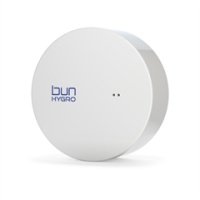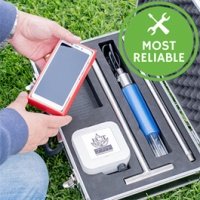How to use the IC-WILE-200 Grain Moisture Tester

Figure 1 Watch an Instrument Choice Sceitnsit demonstrate how to measure grain quality using the IC-WILE-200here.
How to use the IC-WILE-200 Grain Moisture Tester
- Insert the four included AA batteries into the battery compartment.
- Ensure the tester is on a stable and relatively level surface.
- Press the power button to switch on the unit. This step takes only a few seconds, so be ready to take your first-grain moisture measurements.
- On the top left of your screen, you will see the current grain measurement setting. To change grain selection, press the up/down arrows to move through the list of seeds and grains.
- Select the grain you wish to measure, then press the green enter key to confirm. Your choice will appear on the top left of the measurement screen.
- Press the green enter button again to start your testing.
- Firmly push-in the hopper slider to prevent sample grain from dropping into the testing area, then fill the hopper to the rim with your grain sample.
- When the hopper is full, pull the slider out to allow the grain to fall evenly onto the testing cell.
- When prompted on the LCD, remove the hopper. Do this by pulling the handle towards the front of the unit and unclipping the hopper.
- The screen will prompt you to level the grain in the test cell. To do this, push the handle in steady motion towards the unit's back and then forward again.
- When the brush returns to the starting position, the meter will automatically begin calculating the moisture content.
- Within seconds the following information will appear on the LCD;
- Measurement grain type
- The total number of tests taken to calculate the average
- The average moisture percentage
- Sample temperature
- Test weight, expressed in kilograms per hectolitre (kg/hL); and
- The resulting determination of grain moisture content.

Figure 1 Wile-200 LCD measurement screen
Conclusion
The Wile 200 tests grain moisture, hectolitre weight, and grain temperature. The meter does this precisely and efficiently for a comprehensive range of grains and seeds.
Want more information on the Wile 200? See the links below or contact us!
Learn why so many people trust Instrument Choice for their scientific instruments.
Additional links
- View the Wile 200 moisture tester here
- View the full range of Wile Portable and Benchtop Grain Moisture Testers here
- Browse the entire range of Grain and Hay Moisture Testers available at Instrument Choice here.
- Watch "How to use the IC-WILE-200 Grain Moisture Tester" again.Want to see what comes with the moisture tester? Watch an Instrument Choice Scientist "'Unboxing the IC-WILE-200 Grain Moisture Meter'".

Also interesting
Temperature and humidity are two of the most monitored environmental variables. These parameters impact a wide range of factors, including occupant comfort, air quality, food and pharmaceutical manufacture and storage, material preservation, and more.
Selecting the best device for your application from numerous wireless temperature and humidity sensors can be a challenge. Take the heartache out of the selection process! Instrument Choice Scientists have identified top-rated wireless temperature and humidity sensors, with examples of their ideal applications and important specifications.

Soil moisture sensors are essential tools for farmers, hobby gardeners, groundskeepers, and horticulturalists. Using a soil moisture sensor to maintain correct soil moisture levels will enhance plant growth and reduce water wastage.
The range of soil moisture sensors is as vast as the range of applications. You’ll discover every type, including simple analogue meters, IoT devices that send your soil moisture data straight to your phone, an assortment of digital meters for home garden use, and professional, research-grade sensors.
Don't wet your plants – before you embark on the potentially challenging task of researching soil moisture meters, check out these top-rated sensors- click here!

